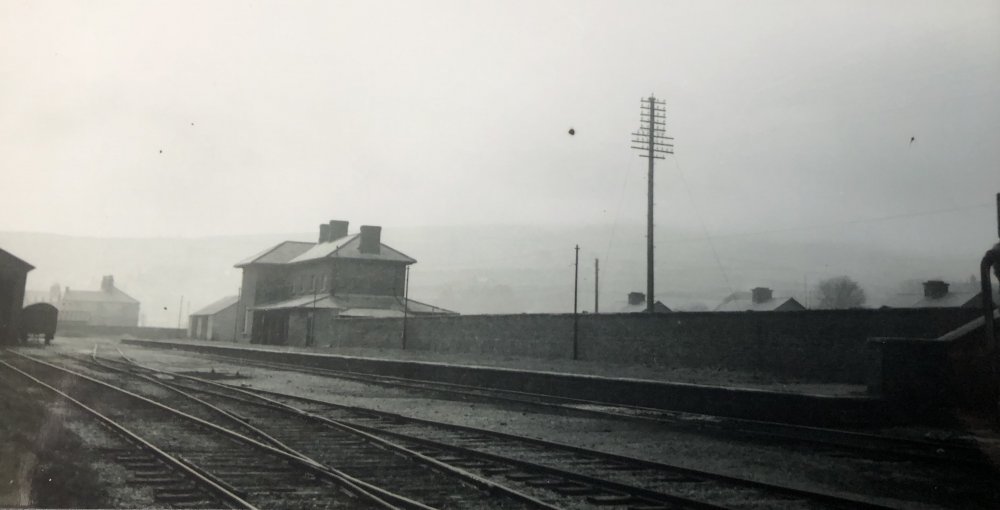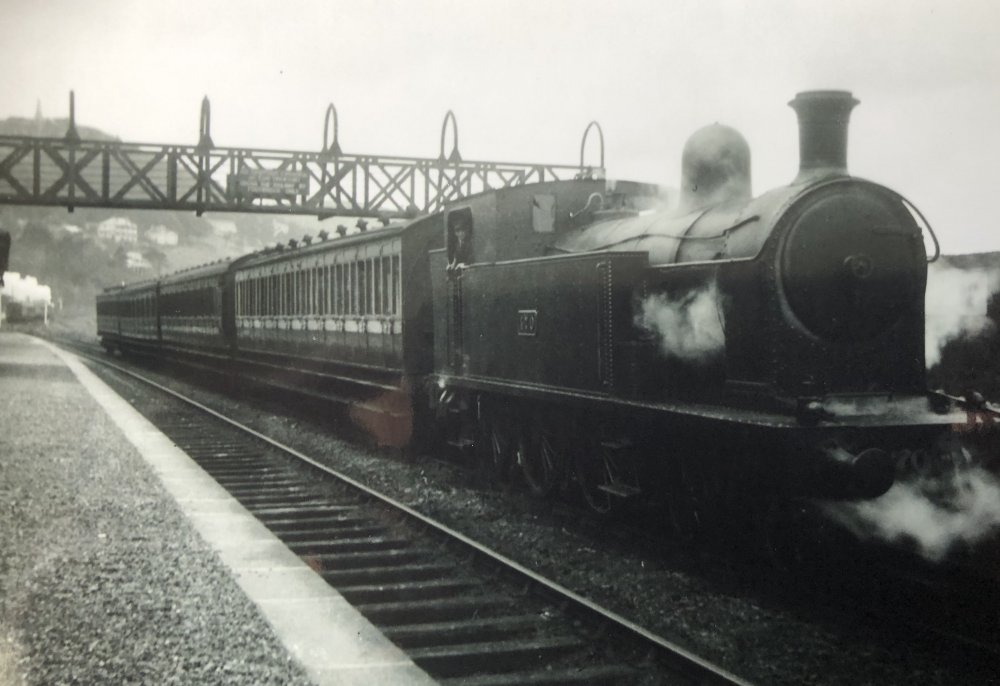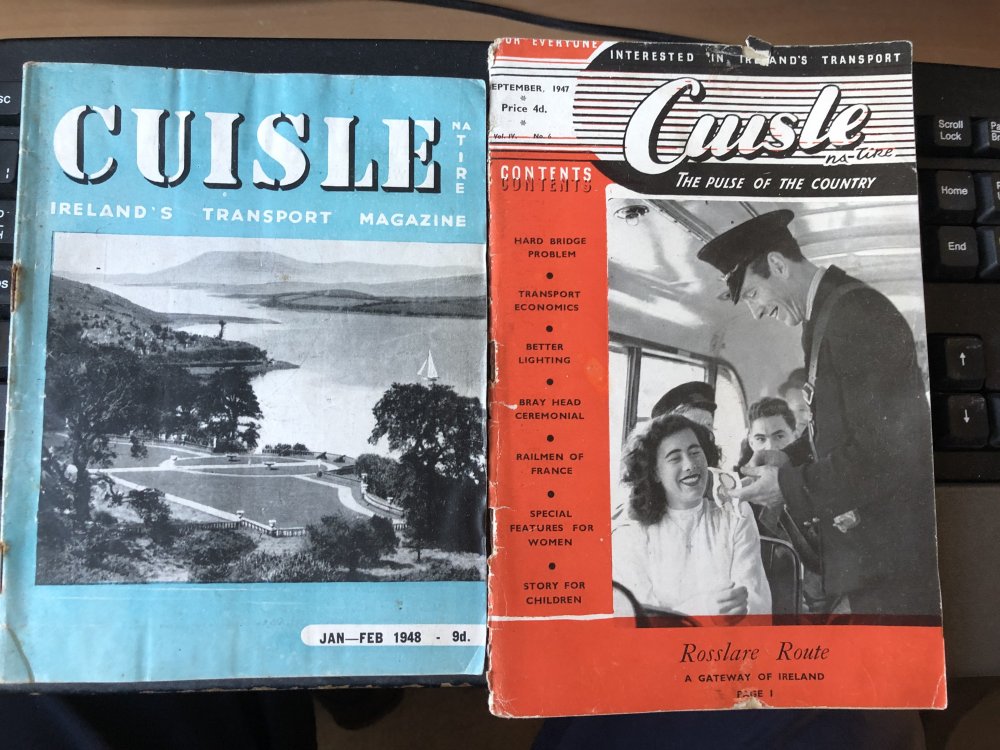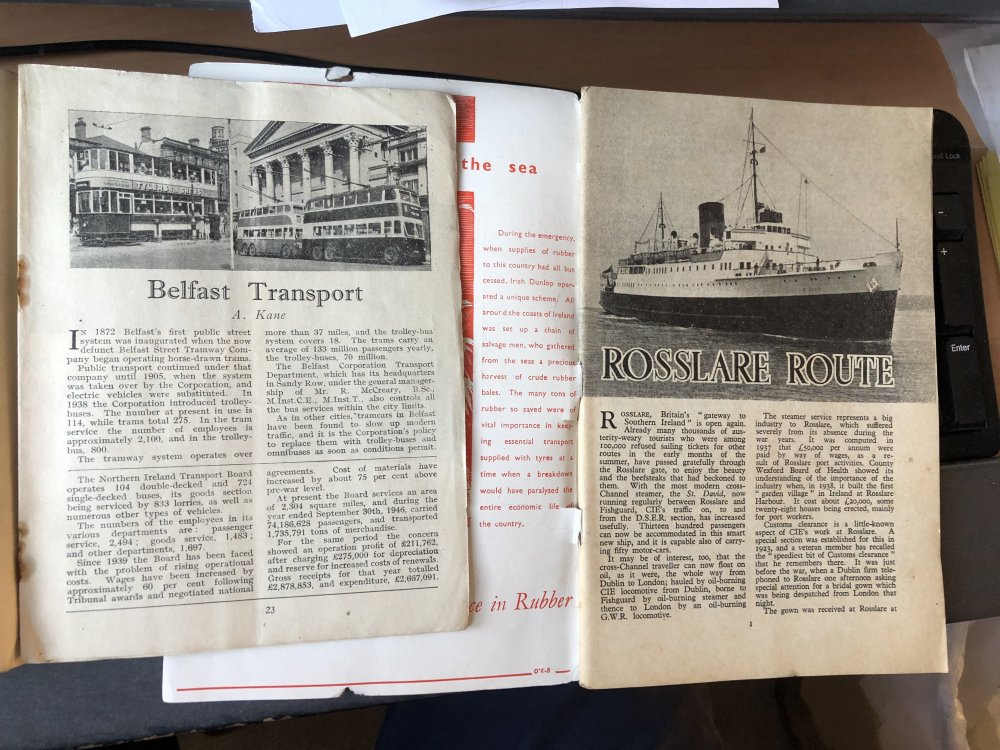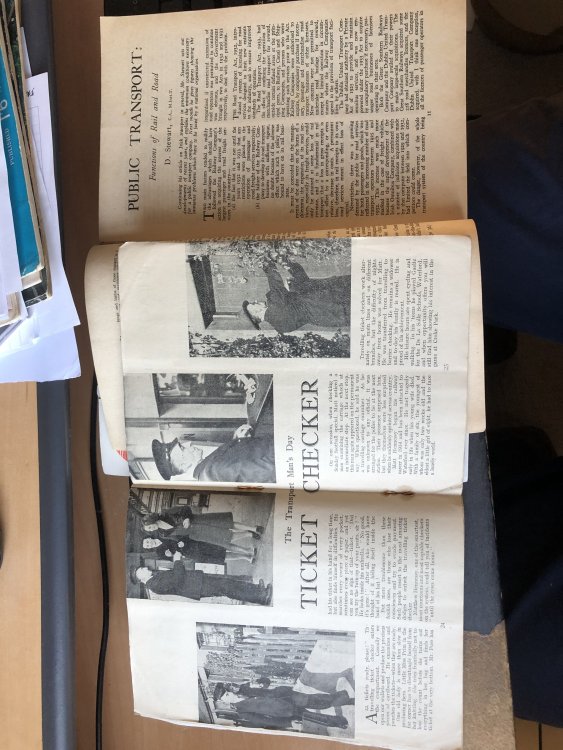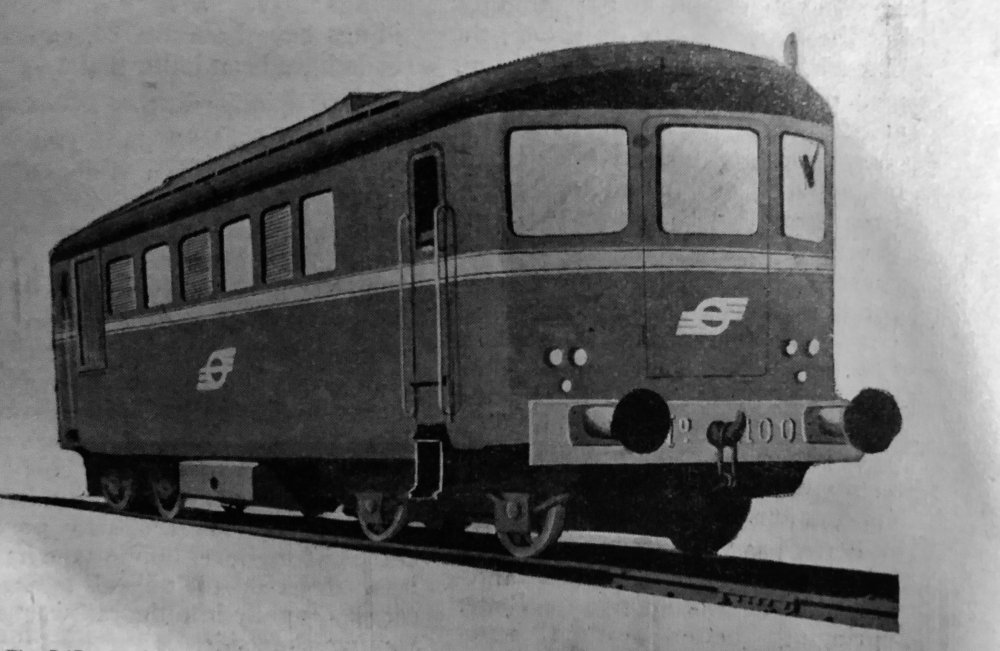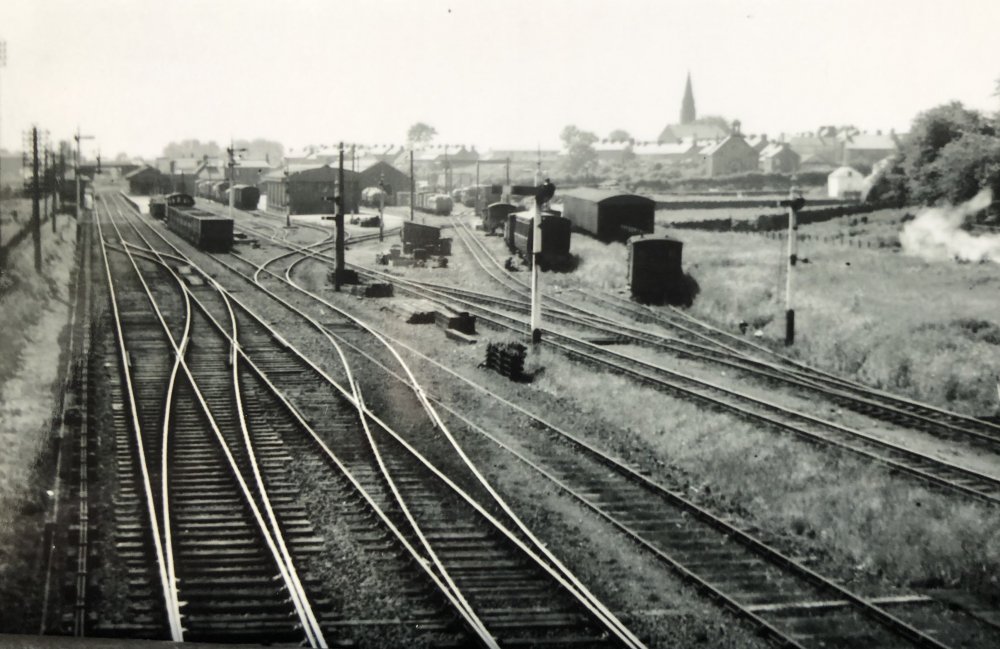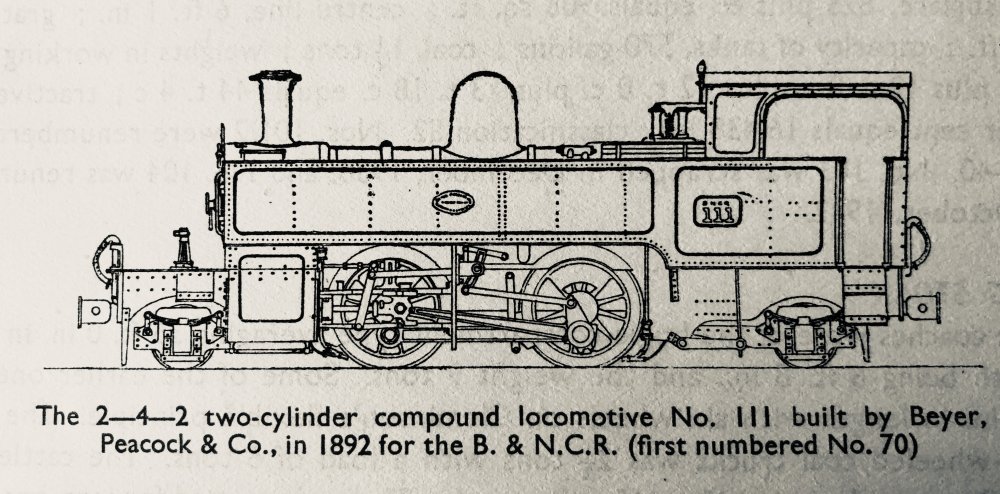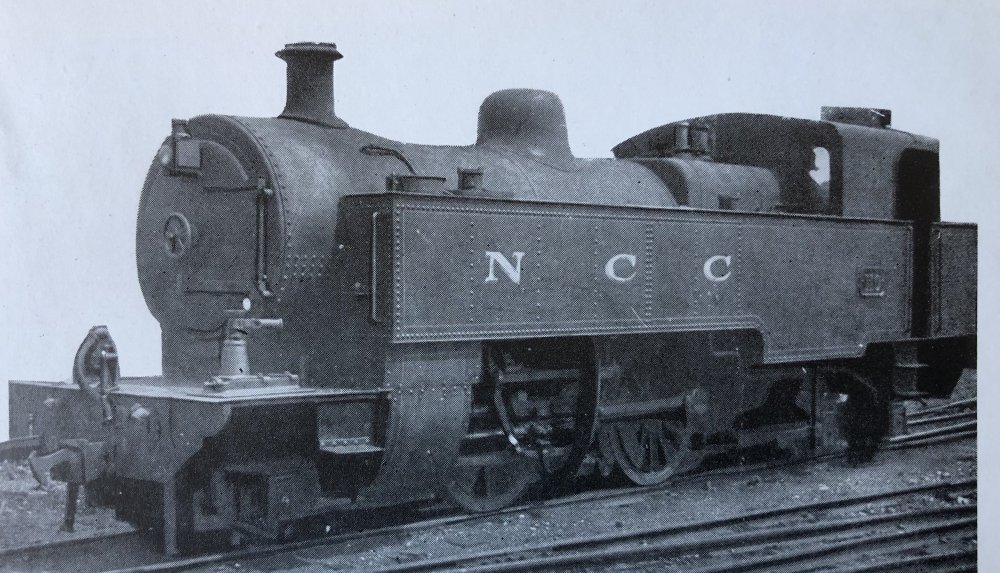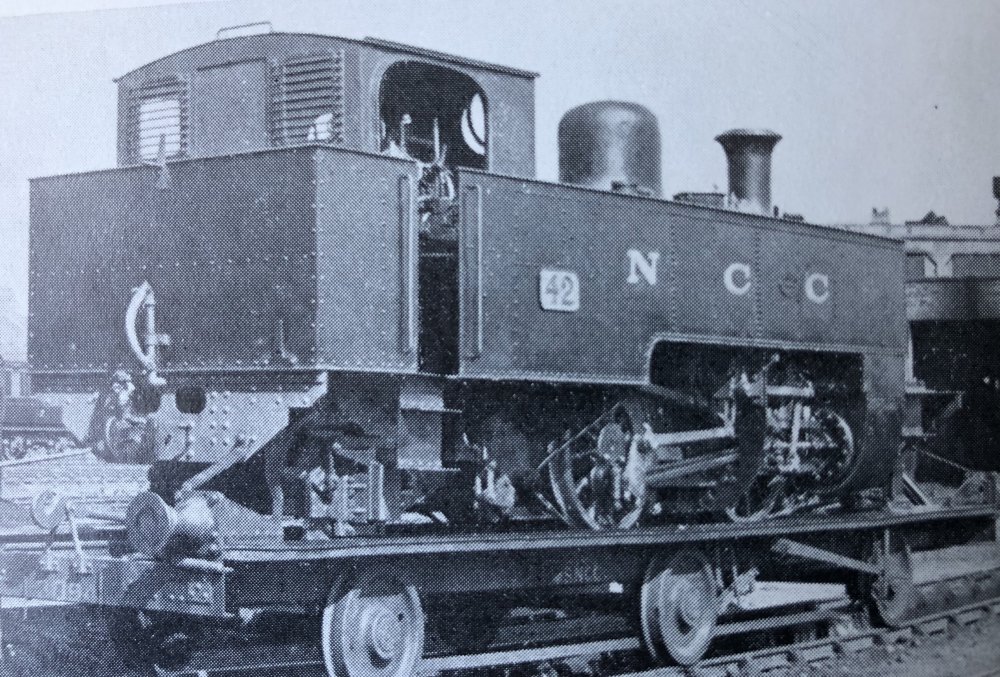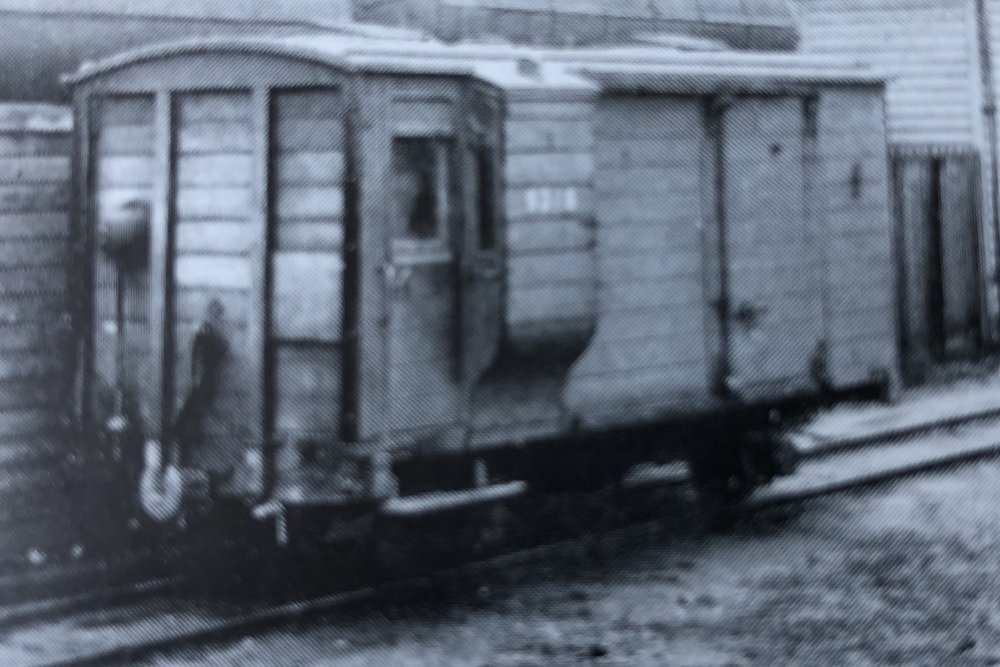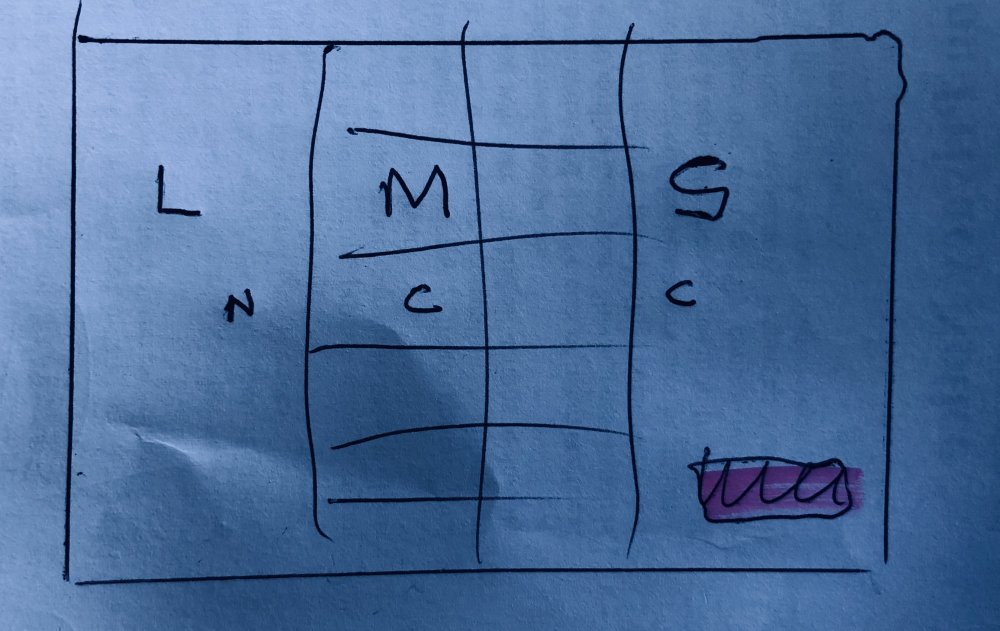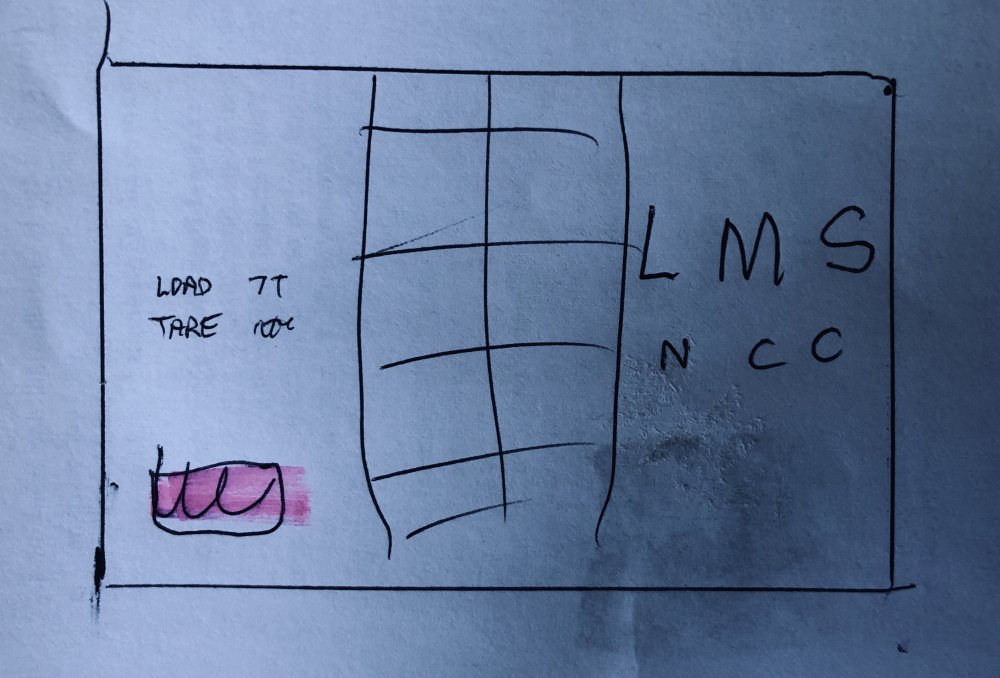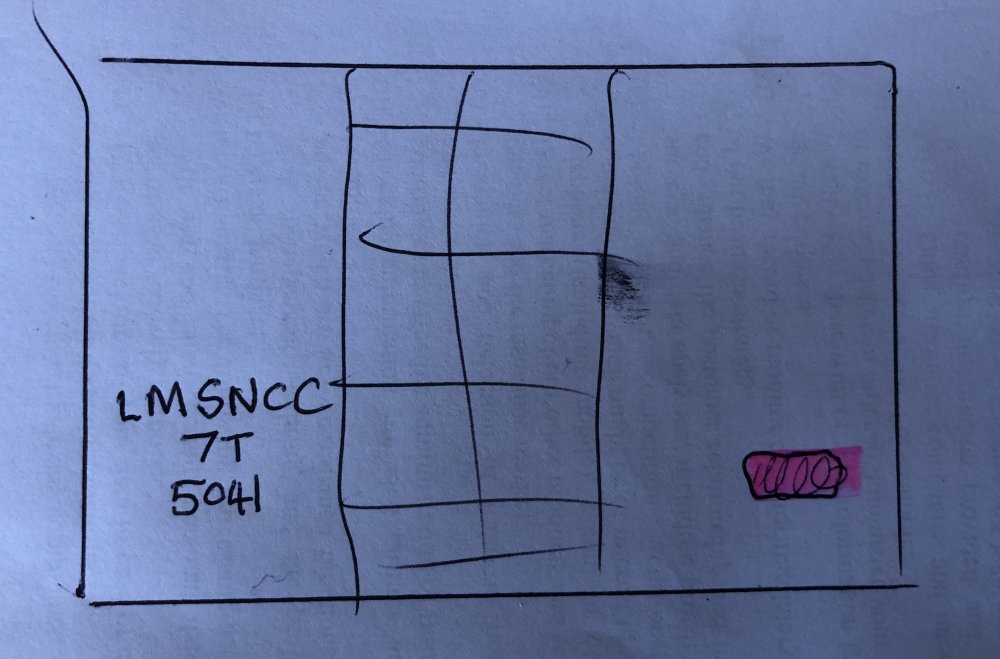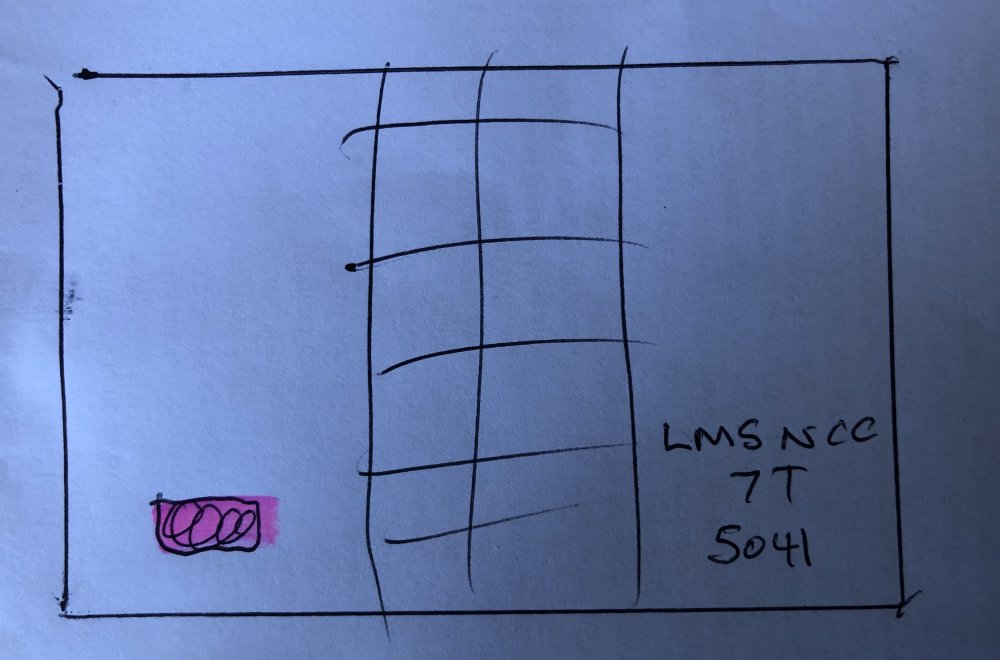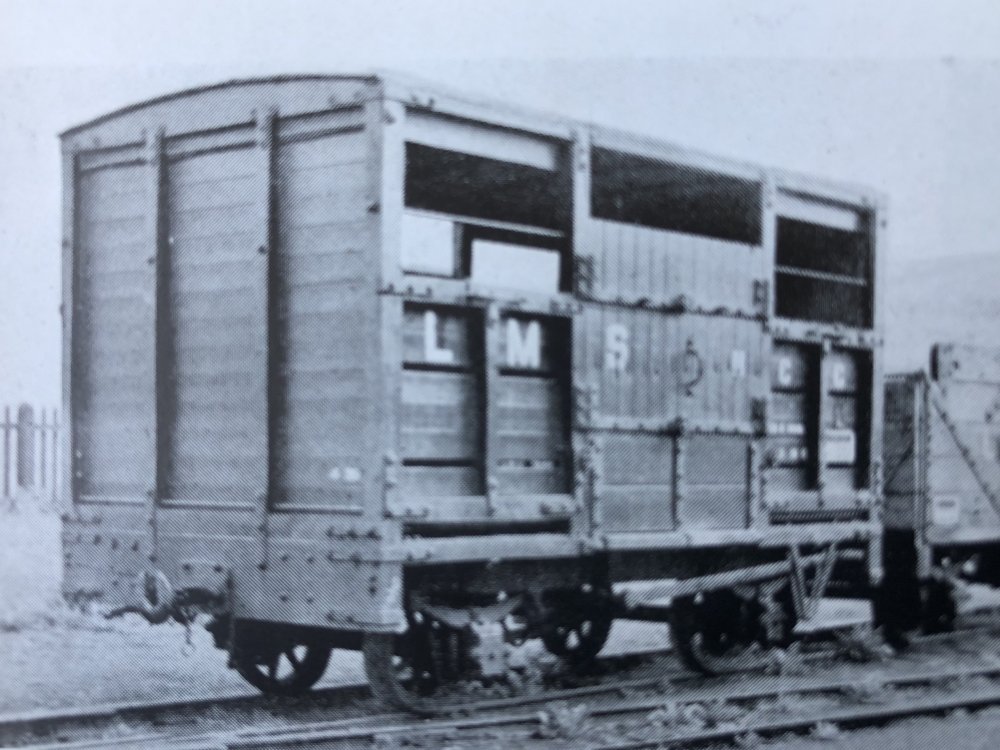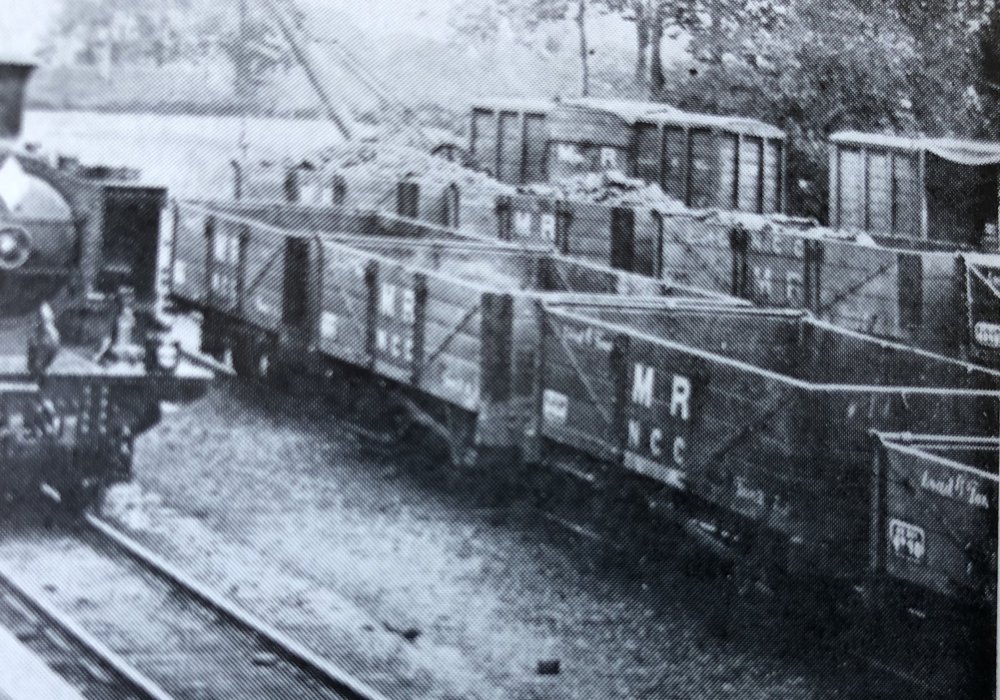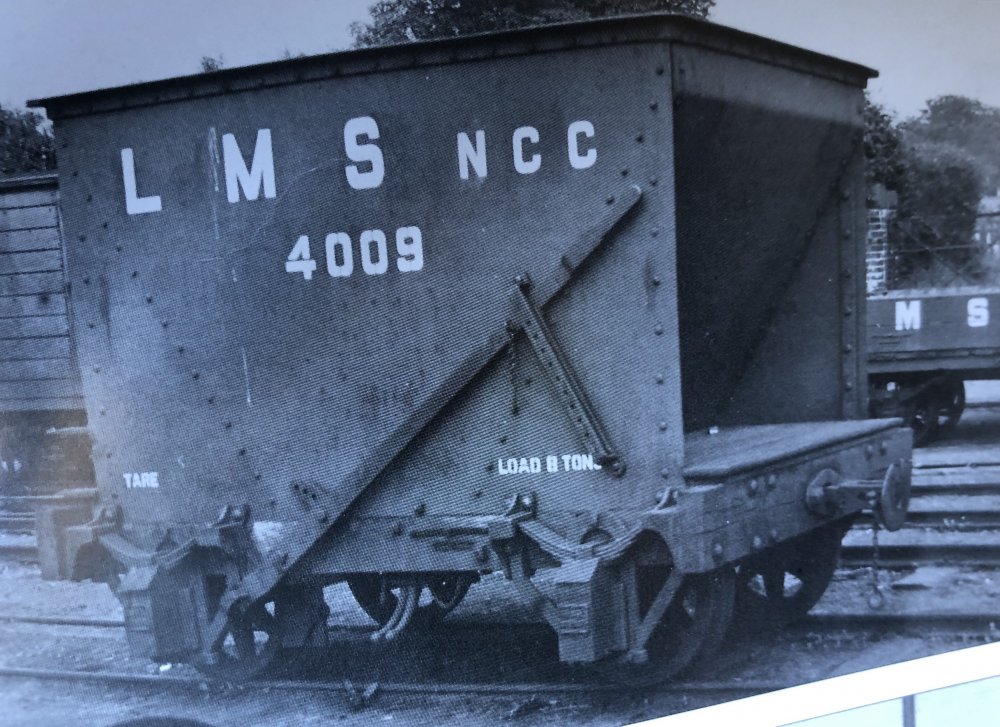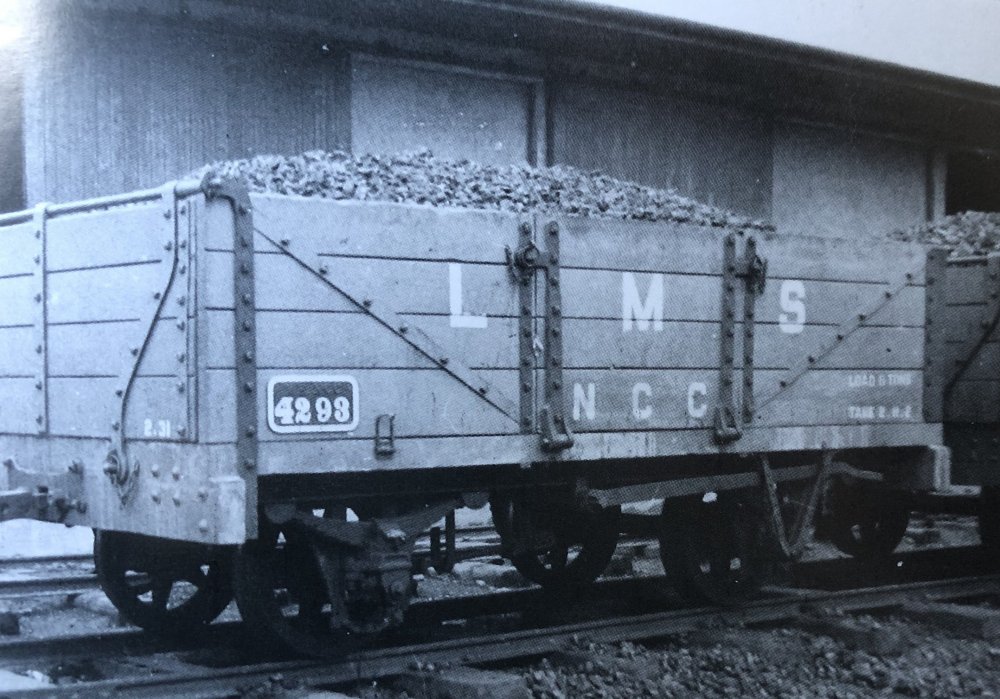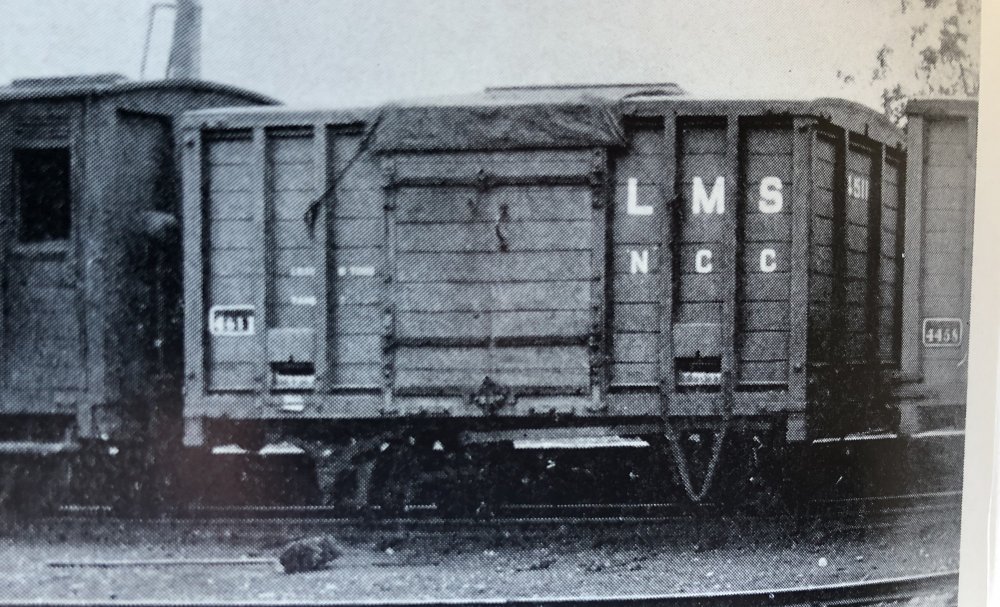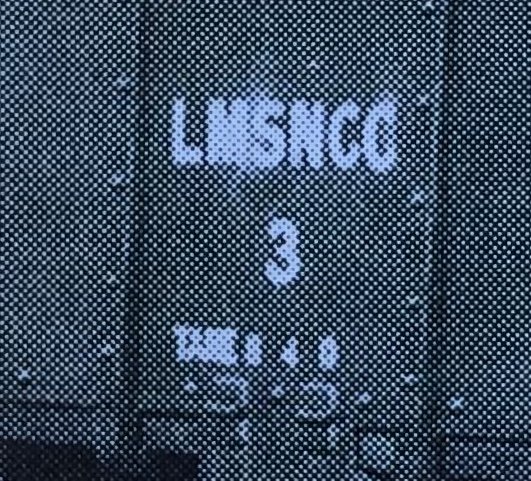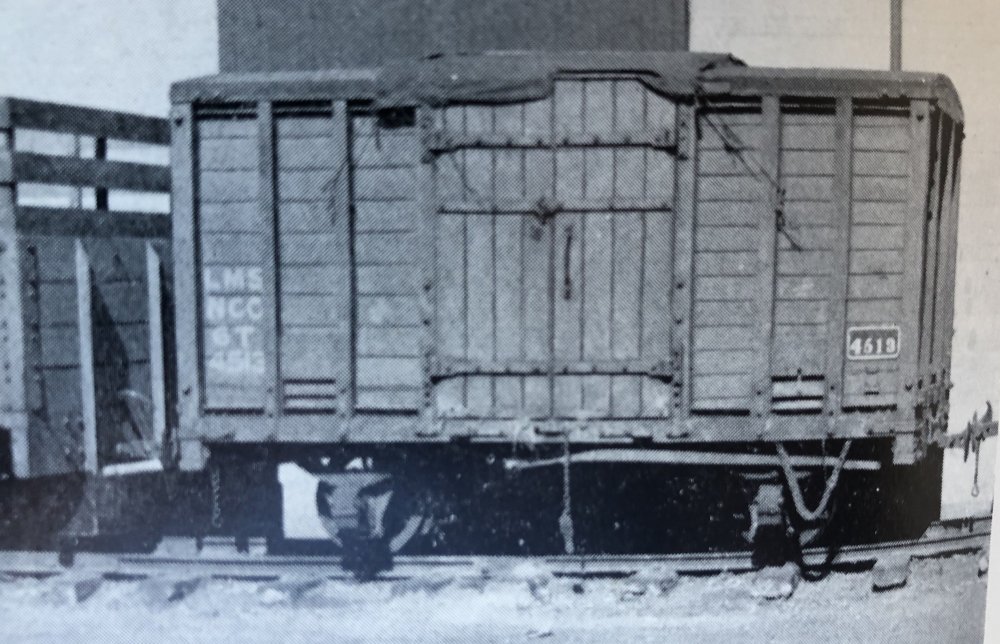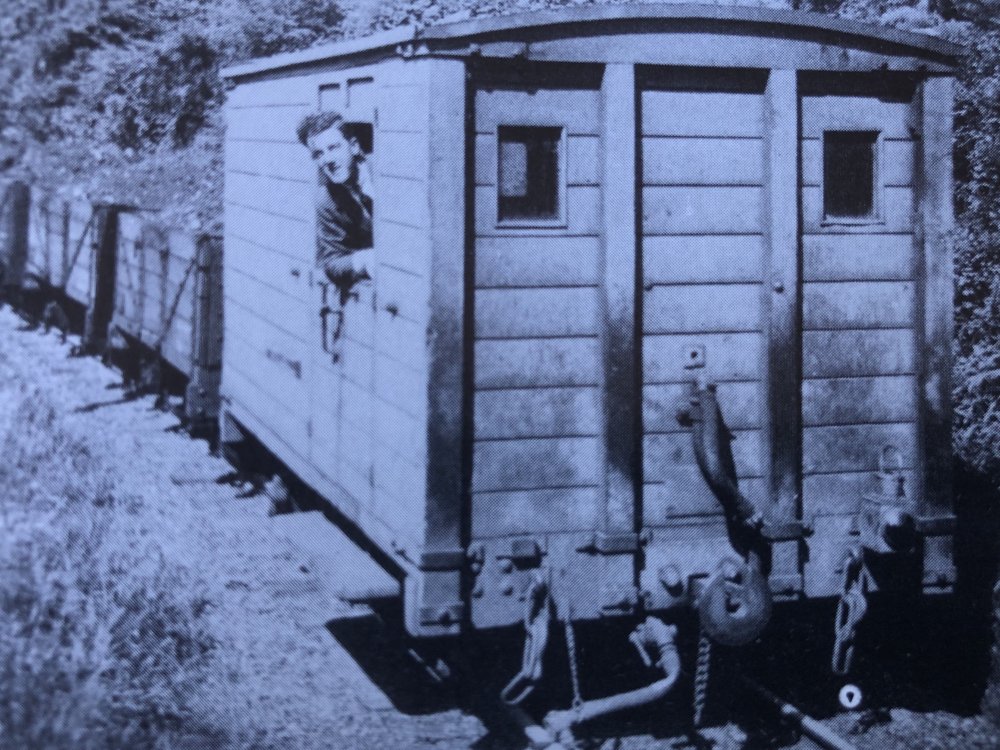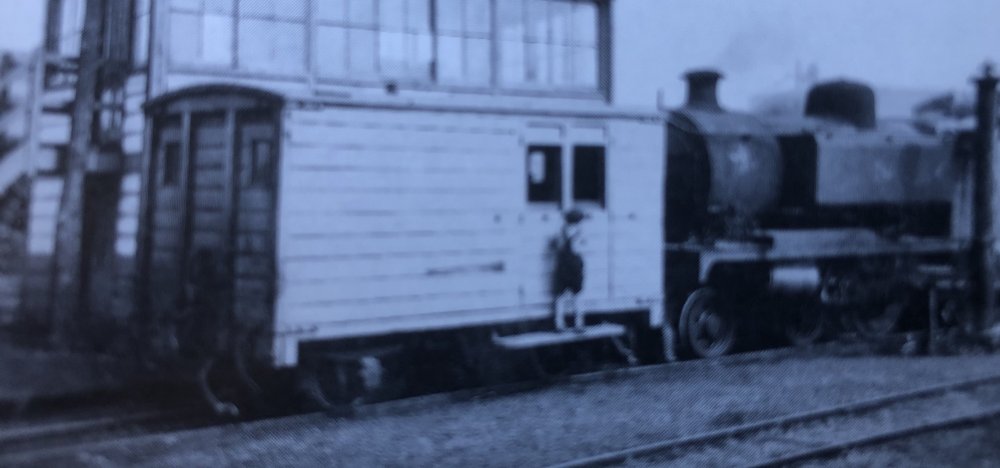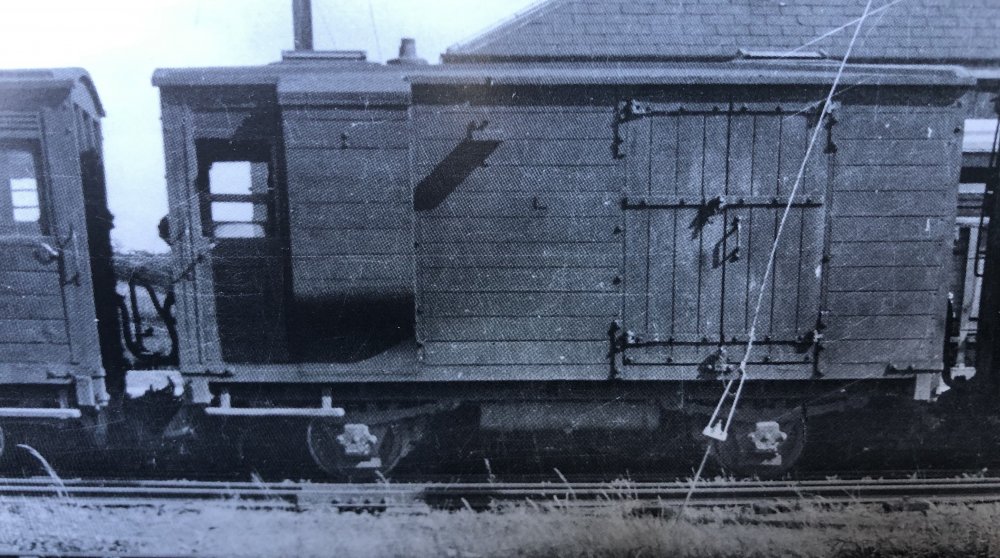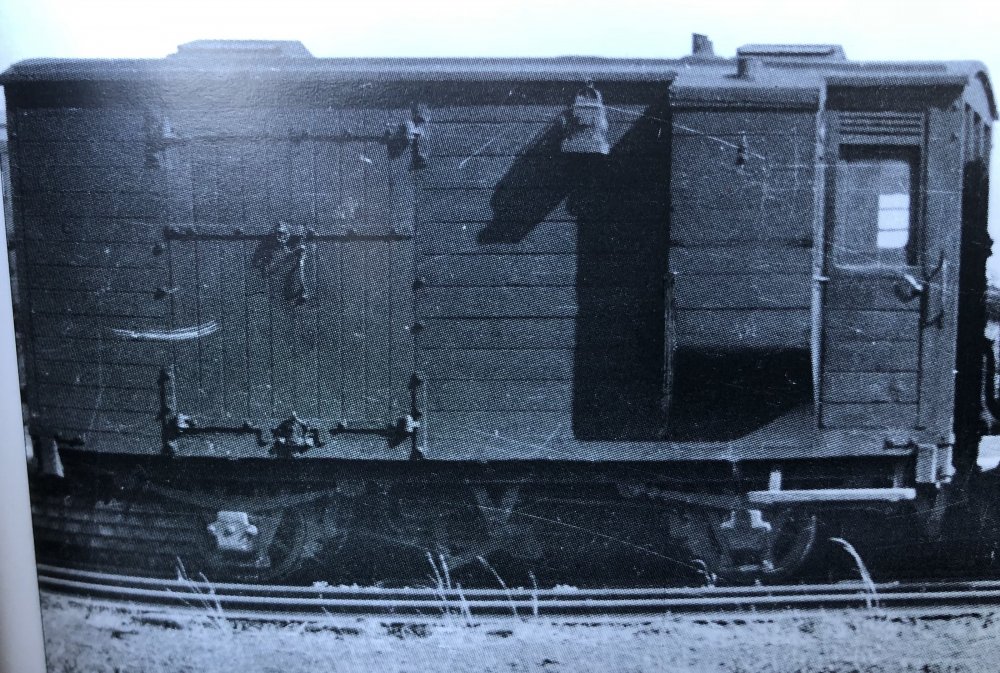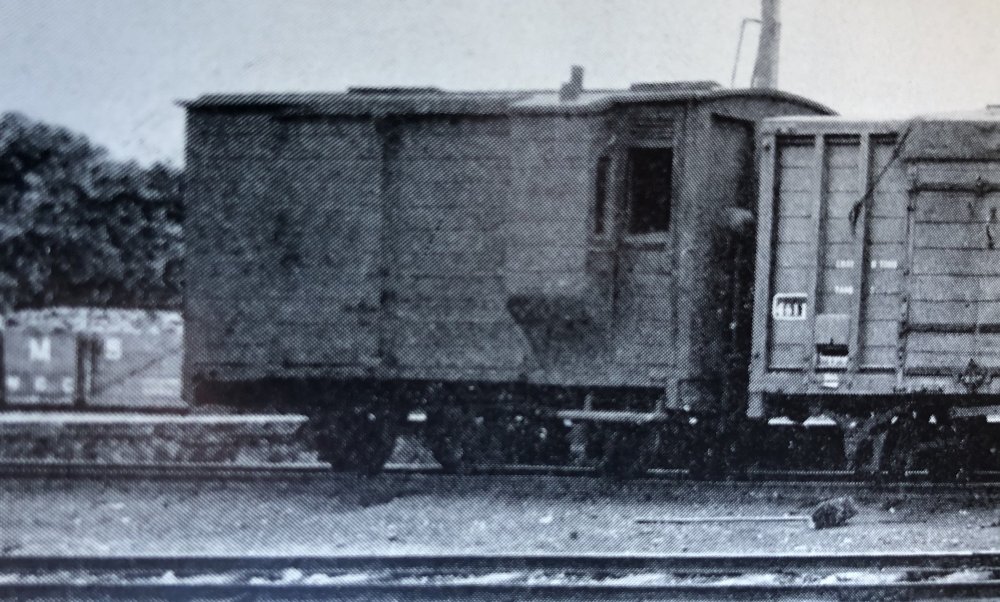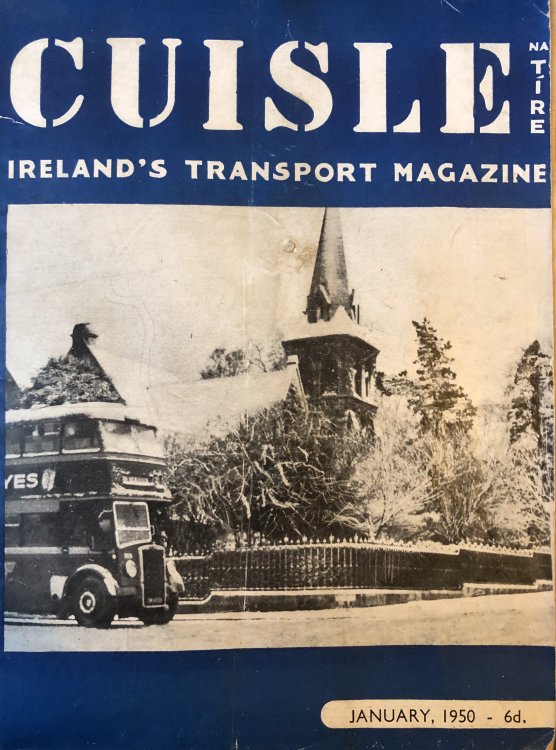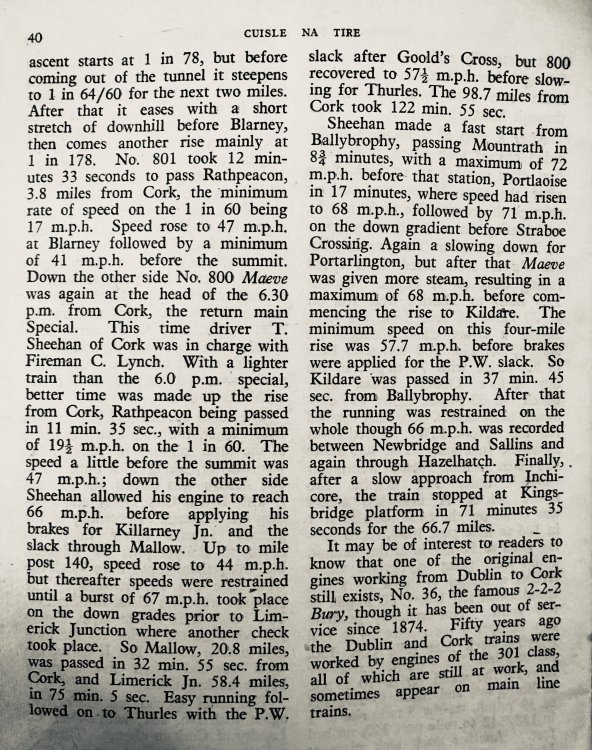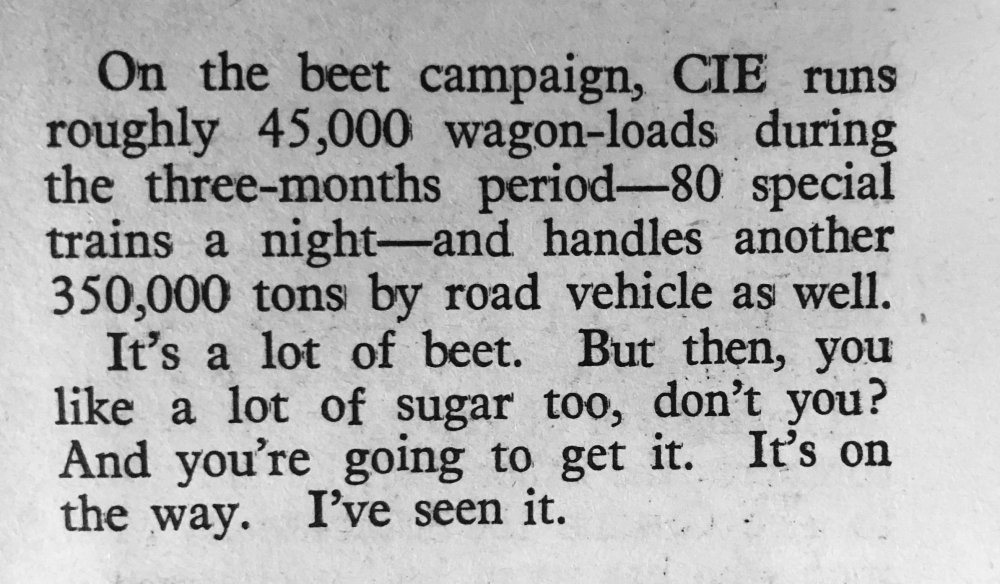-
Posts
15,831 -
Joined
-
Last visited
-
Days Won
393
Content Type
Profiles
Forums
Events
Gallery
Blogs
Store
Community Map
Everything posted by jhb171achill
-
Off to the DSER today. 1. A typically deserted Murrough Station, Wicklow, 1939. 2. DSER suburban, 1939. Where? Killiney? Leading coach still brown & cream, the rest maroon.
-
I too have seen that picture, Old Blarney, though I can't just place where! Yes, it would have been C & D - the others, I think, were long gone.
-
I doubt it, Old Blarney - he had an aversion to public events of any sort! Had he been invited (and he could well have been) he would more than likely have turned it down.... I had, indeed, searched the faces in those photos before, and there's no sign of that moustache.....!
-
Cuisle na Tíre (“Ireland’s Transport Magazine”)
jhb171achill replied to jhb171achill's topic in General Chat
-
Quite possibly.... The Drumms did end up as hauled coaches in CIE green, yes. being the older (darker) green, this came with two (normal!) "snails" on each side, spaced as usual on carriages, about a third and two thirds along the sides.
-
Yes, actually many early diesels had single wipers, and there was actually a plan investigated to put whistles off scrapped steam engines onto new "A" classes, believe it or not!
-
Cuisle na Tíre (“Ireland’s Transport Magazine”)
jhb171achill replied to jhb171achill's topic in General Chat
I’ve two spare copies of this. If anyone wants them, send me privately your name and postal address. Warning: by no means all of it is of railway interest - it was aimed at the general public. UPDATE: These now have a new home. -
Now THERE'S a layout idea. Buy one of those Swiss things, or something broadly similar, and paint it green...................!
-
Yes, it's an artist's impression - those bogies would be better suited to the Schull & Skib! I am intrigued as to why the "flying snails" are the wrong way round...........
-
No, it's an artist's impression - they were never built. I'll try to fix this. Very possibly! OK, the pic of this thing seems to have disappeared; here it is.
-
Looks superb! However the black livery would have been replaced by dark grey by about 1915, so your dark grey is more appropriate. Also, in CIE days, if any lettering was showing, it would say “G S” more likely.... I have one if these vans and can attest to their superbness, thus I strongly recommend it if anyone out there is considering it!
-
I had the same dilemma regarding the forthcoming “A”s and 121s..... They’re all good! Personally, what would decide it for me would be a comparison with what else was on my layout - whichever livery fitted best to suit what I already had....
-
Recent mention of the proposed Sligo Leitrim Garrett and the NIR push/pull coach at Downpatrick (which never turned a wheel in actual traffic) prompted me to seek this out. This is from a 1948 issue of CIE’s “Cuisle” magazine, showing a proposed diesel-electric locomotive; family resemblances to what would become the B113 class (all two of them) are obvious. Strangely, the “flying snails” are back to front!
-
Today we’re back on the NCC in the early 1940s, exact date unknown, but pre-1944. Ballymoney station looking towards Coleraine / Derry, With the main line on the left and the narrow gauge Ballycastle line on the right.
-
Wow, that is absolutely priceless!
-
15mm scale model, Gavin? Do tell more!
-
-
Yes, it was my father who took it, and it is on a bridge. The area is unrecognisable today due to redevelopment.
-
Van 5310 in in the Malahide Fry collection (once the place reopens!).
-
Yes, that’s it - you can see what had been the platform.
-
An excellent idea, Angus. As you say, you've room for stock from the MGWR, WLWR, SLNCR and even without the Bundoran connection, and the GSWR's and GNR's wagons would have been frequent visitors to Sligo Quay. You'd have got the very occasional DNGR or NCC visitor as well, though BCDR is probably pushing it a bit!
-
Another NCC narrow gauge van, at Larne Harbour about 1946. Its grey, but shows the apparent lack of markings on vans, with just the number on the ducket. And this was the sort of pattern on markings. Originally the “M R” or “L M S” was larger, but later “shrunk” to the smaller size, I’d say 6 inches high. Excuse the rough drawing. The pink on the diagram (if you could call it that!) represents the cast iron number plate - white letters on black background, which you can see on wagons in the photos above - not day-glo pink!
-
First, the earlier types of lettering. Ironwork in the third photo appears darker; doubtless a common reason why some today see it as black - it isn’t, it’s rust! Emphasised by bleaching of painted woodwork.... Next, the later versions. You can see the cast wagon plates. These were always black background, white lettering. Now, the vans. The smaller ones are faded grey and on the B & L. The darker ones are your model, Ballycastle line, and bauxite. No markings at all are apparent, and no cast wagon number plates either! I suspect there’s a faded painted number only on the ducket.
-
Now, I've done a bit of delving. As airfixfan says, there were several types of vans between all three NCC narrow gauge lines (excluding Derry - Strabane). You had the Cushendall line with its unique bogie No. 333, you had the Ballycastle Railway Co., The B C R B R, and the B & L R. Then, on top of that, NCC alterations. Most narrow gauge railways had no two guard's vans EXACTLY alike! On the Ballycastle and remainder of the B & L in the post-1940 period, any guards vans used on passenger trains on the Ballycastle line were bauxite brown. Without knowing exactly what vans were actually in use as such, and which weren't, I can't give numbers. Other vans were grey, like all other goods stock, as were all on the Larne - Ballyclare line. I will post below some illustrations which illustrate several other points too. You mention markings. I have uncovered about half a dozen pictures of your type of model. You'll be pleased to hear that lettering is not something you need worry about, as all photos showing these vans in the brown livery have NO markings, and indeed all but one of any grey ones I've ever seen pictures of, have no markings either, other than the vehicle number on the ducket. So the full correct livery is: body bauxite brown. Roof mid grey. Chassis almost certainly* brown, as ironwork on the body is brown too, as it was grey on grey wagons. Like black chassis, picked-out black ironwork wasn't the norm in Ireland. Couplings black. If you've an interior door open, interior a dark cream colour, as befitted interiors of NCC guard's vans in general. (* I qualify this, as main line bauxite wagons sometimes had black chassis if they were to be used in passenger trains, but NOT otherwise; for example, all of the so-called "brown vans", without exception, always had black chassis in any of their liveries - brown, later green, or maroon). For your info, though, about NCC narrow gauge wagons in general. As I mentioned earlier, there were many subtle differences between the 4ft 8 1/2 LMS and the NCC in liveries. I mentioned that while on British carriages, crests were the norm on most, crests were NOT the norm on most here, and many including narrow gauge had none of the very nice lining. If you look at wagons, while i am not an expert on LMS liveries, I believe that at quite an early stage they made a distinction between fitted wagons (bauxite brown) and everything else (grey); this being carried on into BR days. Here, the GNR started painting fitted wagons brown at some stage in the 1950s, and the UTA seems to have done so. On the NCC, I can establish this. Everything on the ex-Ballymena & Larne section remained all-grey until the end. Passenger services, of course, were long gone by then. On the Ballycastle line, vans as mentioned above; all other stock apparently grey - by this stage, standard LMS wagon grey as used on LMS stock in Britain. Lettering.... the BNCR used evenly spaced letters, quite small. Once the BNCR was eaten by the Midland Railway (of England), they got in large font M R, and under this in smaller letters, N C C. But the BNCR had a unique way of numberings wagons. Most companies either put a small cast plate on the chassis, usually with, but sometimes without, a painted number on the sides and in some companies, ends too. Others just painted numbers on. But the BNCR used cast iron plates, with "B N C R" and the wagon number underneath, attached to the wagon side. Usually, whetever side the plate was on, the lettering was on the other, as per the very rough drawing I'm about to post. Once the MR NCC took over, they continued this tradition, with new wagons having the same plates but with MRNCC instead of BNCR on them. Once the LMS took over the MR, they did the same, and wagon plates had LMSNCC and the number in a more plain block font. Same on the 5'3"; the breakdown train had vehicles with such plates into the 1980s. It would seem that in the mid to late 1940s, the "LMS" ended up being the same size lettering as the "NCC". Again, see illustrations below. The attached pics are not from my own collection, but if anything turns up there I'll post that too. They are all from books.
-
Cuisle na Tíre (“Ireland’s Transport Magazine”)
jhb171achill replied to jhb171achill's topic in General Chat
.png.c363cdf5c3fb7955cd92a55eb6dbbae0.png)

